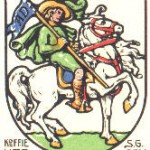 The village of Andijk is in the region West-Friesland in the province of North Holland. The traditional dialect of the region is the West Frisian subdialect of Hollandic Dutch.
The village of Andijk is in the region West-Friesland in the province of North Holland. The traditional dialect of the region is the West Frisian subdialect of Hollandic Dutch.
The village has a ribbon layout along the IJsselmeer dyke with a length of 7 kilometres. Andijk started as a small group of houses in about 1300. In 1667, a small church (Buurtjeskerk) was built — a few years after our house was built. During the French Napoleonic occupation, Andijk became an independent village in 1812.
This is a video over the area:
Andijk has been hit by 4 major floods, the last of which was in 1916. More than 300 houses in Andijk were torn down, and many houses were rolled or shipped hundreds of meters to a new location. Luckily, ours was left standing. The coat of arms “wapen” of Andijk symbolizes “dike watch” (dijkwachten) on horseback, who checked that there was no danger of the banks bursting. During the 2nd World War Andijk was an important part of the Resistance by hiding and sheltering many young draft-age Dutch men and women, known as onderduikers (‘underdivers’).
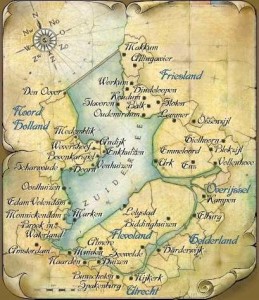 Andijk is located between the historical cities of Enkhuizen and Medemblik. It’s on a large lake called the IJsselmeer. The name Andijk comes from the Dutch “aan de dijk”, which translates into English as “on the dike”. It is rumoured that in the past, people who could not pay their bills or were criminals were sent to live away from the cities “on the dike”.
Andijk is located between the historical cities of Enkhuizen and Medemblik. It’s on a large lake called the IJsselmeer. The name Andijk comes from the Dutch “aan de dijk”, which translates into English as “on the dike”. It is rumoured that in the past, people who could not pay their bills or were criminals were sent to live away from the cities “on the dike”.
In the past the IJsselmeer was called the Zuider Zee (south sea) and its waters were connected directly to all the seas of the world. This was the heyday of the towns on this coast. At the time of the Golden Century in the 1600’s, the Dutch East India Company (VOC), the world’s first megacorporation before it perished By corruption, brought a lot of wealth to West Frisian towns like Hoorn, Medemblik and Enkhuizen. With the construction of the Afsluitdijk (Closure Dike) in the north in the 1930’s, the Zuiderzee became the IJsselmeer, although people here still call it “het zee” (the sea).
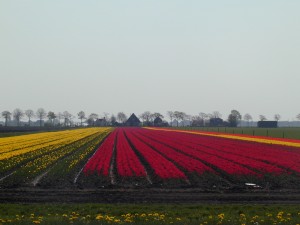 Andijk has fertile clay soil with a lot of flower bulb and specialty seed production along with vegetable horticulture (cauliflower, broccoli, etc.). In the spring there are tulips everywhere and in the summer and autumn we (and our rabbits) enjoy vegetables from the local growers.
Andijk has fertile clay soil with a lot of flower bulb and specialty seed production along with vegetable horticulture (cauliflower, broccoli, etc.). In the spring there are tulips everywhere and in the summer and autumn we (and our rabbits) enjoy vegetables from the local growers.
Andijk is also an important supplier of drinking water for the region. Andijk has a large “polder“, a low-lying tract of land enclosed by dikes, which was made in 1926 in the Zuiderzee as a test run for making a much larger polder to the northwest of Andijk. It’s not for nothing that they have a saying “God created the world, but the Dutch created Holland”.
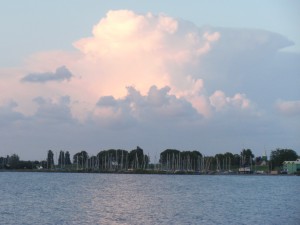 The area is known for it’s old fishing villages, sailing, and recreation areas. There is large recreation area called the Vooroever on the polder across the road from us, which has a nature reserve for birds and is a nice place to cycle and walk with our dog.
The area is known for it’s old fishing villages, sailing, and recreation areas. There is large recreation area called the Vooroever on the polder across the road from us, which has a nature reserve for birds and is a nice place to cycle and walk with our dog.
In the winter, if the weather is right, it’s great to ice skate on the lake and around the canals by our house. There is a nice beach that we like to swim at in the summer and is very popular with windsurfers and kitesurfers. Andijk also has a large harbour with two marina’s, which we enjoy sailing from on our small wooden boat.
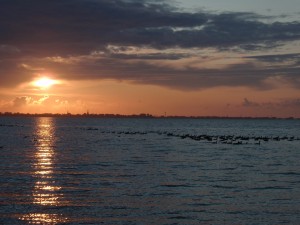 Overall it’s a nice relaxing place to live, with friendly people and a nice environment.
Overall it’s a nice relaxing place to live, with friendly people and a nice environment.